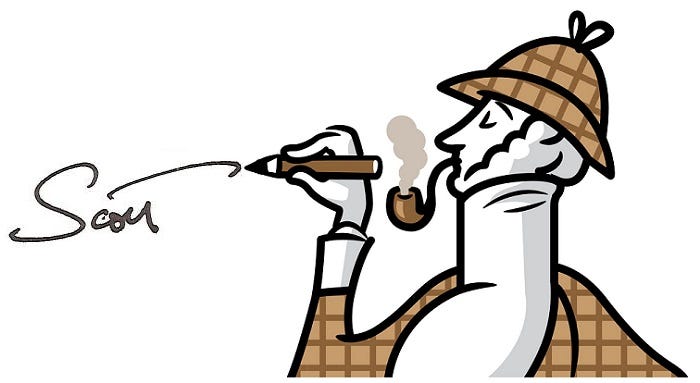
“I am human, therefore nothing human is alien to me.”
— Terence, c. 155 B.C.
One of the first things we learn when we come into this world, startled by bright lights and cold air, is to look for others.
Philosopher Martin Buber1, in his short essay I and Thou (1923), observed:
“The development of the child is inextricably bound up with that of the longing for the Thou, with the satisfaction and disappointment of this longing.”
You probably remember a seminal moment in your childhood where you felt particularly loved and cared for; perhaps you remember another moment where you felt completely alone.
Those experiences and memories made you who you are today.
It probably started a lot younger than you realize: emotional contagion — the foundation of empathy — where we experience and share the emotions of people around us, can be seen in babies.
A baby’s cry pierces the air like a warning siren for the parent attuned to her child, signaling hunger, pain, or some other immediate need. Interestingly, a 1971 study found that three-day-old newborns were most likely to cry if exposed to the sound of another crying infant, demonstrating the concept of emotional contagion.2
We need others and we recognize others from the very beginning of our lives.
People First
Compassion and empathy are deeply rooted in who we are and make it possible for us to band together in social circles, communities, work teams, and societies.
It is the founding principle of the Working Together© Leadership and Management System I participated in while serving at Ford Motor Company under Alan Mulally, who established it.
“People first…love ’em up” is the opening salvo to this method — the principle I use with all of my coaching clients.
If you don’t start from a position of having deep regard for the dignity of others, you’re lacking leader humility.
Having regard for people’s dignity means that we recognize and include them, acknowledging their skills and determining what they can contribute. Leaders are able to do this well.
Collaboration — working together — is inextricably connected to caring about others.
I Really Don’t Care
What about the flipside? What do we see when people don’t care about others?
A new study found that people who report favorable views of a particular political figure also tend to score higher on measures of callousness, manipulation, and other malevolent traits — and lower on empathy and compassion.3
It speaks to our current fractured environment, which has immediate and observable effects on things like civil discourse and the inability to make progress on significant issues.
So we can see how empathy is essential if we want to work together to accomplish anything.
Together We Can
In the Grant Study4, a longitudinal study that followed 268 men over 80 years, researchers wondered why some of the men had been promoted to officers in World War II while others hadn’t. The differentiating factor was found in their childhoods:
The men who had been well loved and seen deeply by their parents could offer love and care to the men under their command.
These leaders were recognized for their inherent empathy, before we recognized empathy as an essential trait for leadership.
Further, the study has found that the quality of your relationships determines the quality of your life. Forming connections with each other is essential in all aspects of life, whether at work or at home.
“Loneliness kills. It’s as powerful as smoking or alcoholism.”
— Robert Waldinger, 2016
We need each other.
Anything worth doing is worth doing with someone else.
As the old proverb goes, if you want to go fast, go alone; if you want to go far, go together.
So we’ve known since childhood.
Toxic Empathy?
Fr. James Martin discusses the problem with seeing empathy and compassion as bad or toxic (Facebook)
For Crying Out Loud
A baby crying is one the most evolutionarily ancient forms of social connection: emotional contagion. We’re beginning to discover just how early in life empathy starts. (Psyche)
We Are More than Greed and Heartlessness
During his time as a volunteer in medical tents in the Civil War, later published as Memoranda During the War (1875–76), Walt Whitman learned that people are fundamentally filled with compassion: “that beneath all the ostensible greed and heartlessness of our times there is no end to the generous benevolence of men and women in the United States, when once sure of their object.” (The Walt Whitman Archive)
Shaking Shibboleths
Lewis H. Lapham, managed to skewer and sneer at the elite in American society, with an eye toward compassion for the general public, despite his gilded upbringing, writes Mark Hall in 1990. It’s a thoughtful look at our favorite essayist and North Star. (The North American Review)
📺 What makes a good life? In his TED talk, Dr. Robert Waldinger shares lessons from the longest study on happiness. (YouTube)
🎧 Marilyn Gist discusses the concepts behind leader humility and shares stories about leaders who exhibit this trait. (Timeless Leadership)
📚 In How to Know a Person: The Art of Seeing Others Deeply and Being Deeply Seen, David Brooks writes an entire chapter on “The Art of Empathy,” noting that we need three skills for expressing empathy: mirroring, mentalizing, and caring. Well worth a read.
There’s so much to learn,
Martin Buber, Philosophy of Dialogue: I and Thou, The Standford Encyclopedia of Philosophy
Simner, M. L. (1971). Newborn's response to the cry of another infant. Developmental Psychology, 5(1), 136–150 https://psycnet.apa.org/record/1971-28677-001?doi=1
Neumann, Craig S. and Ngo, Darlene A. (2025) Malevolent vs. benevolent dispositions and conservative political ideology in the Trump era, Journal of Research in Personality, Volume 118 https://www.sciencedirect.com/science/article/abs/pii/S0092656625000704?via%3Dihub
Good genes are nice, but joy is better, The Harvard Gazette, April 11, 2017









💕 always timely